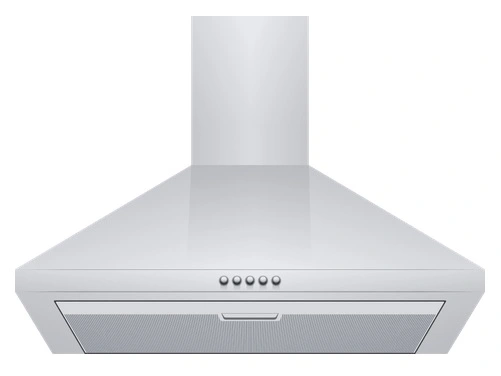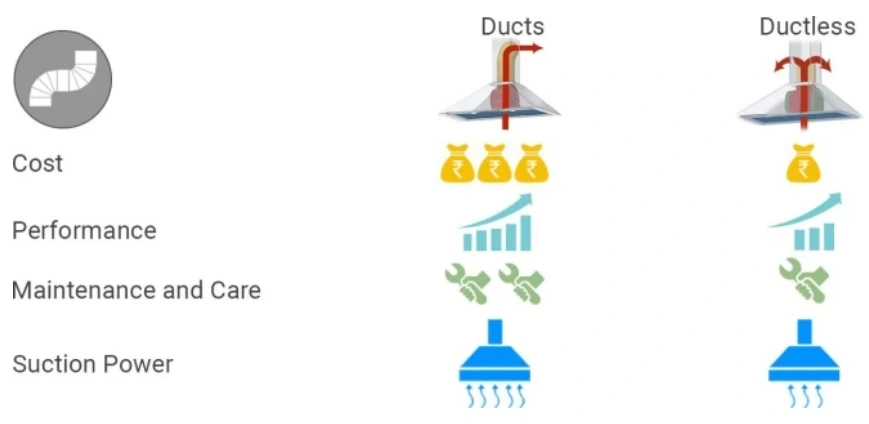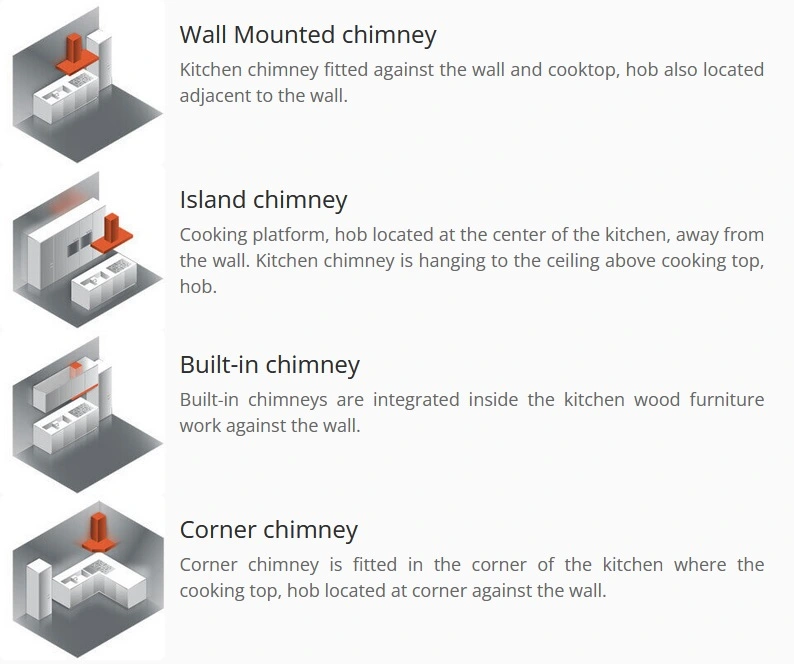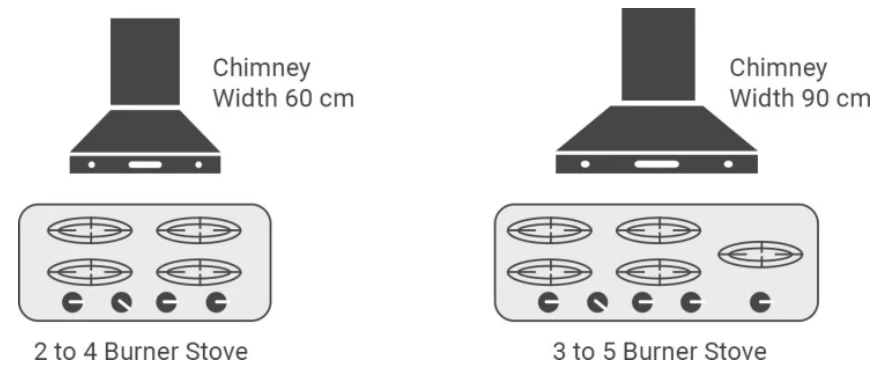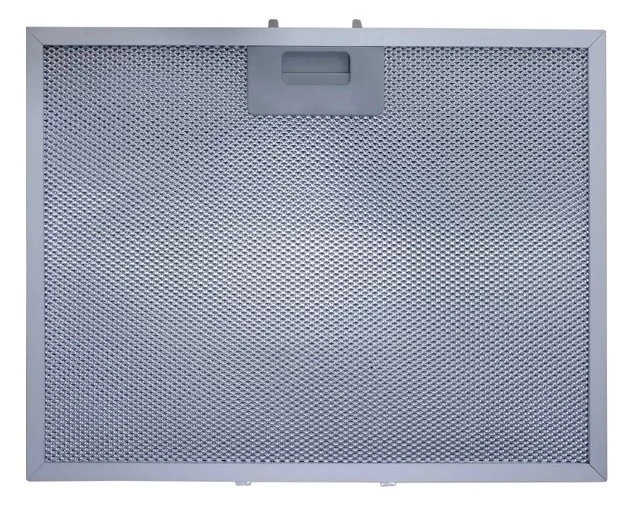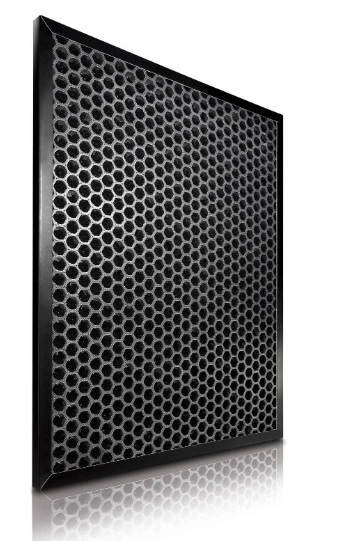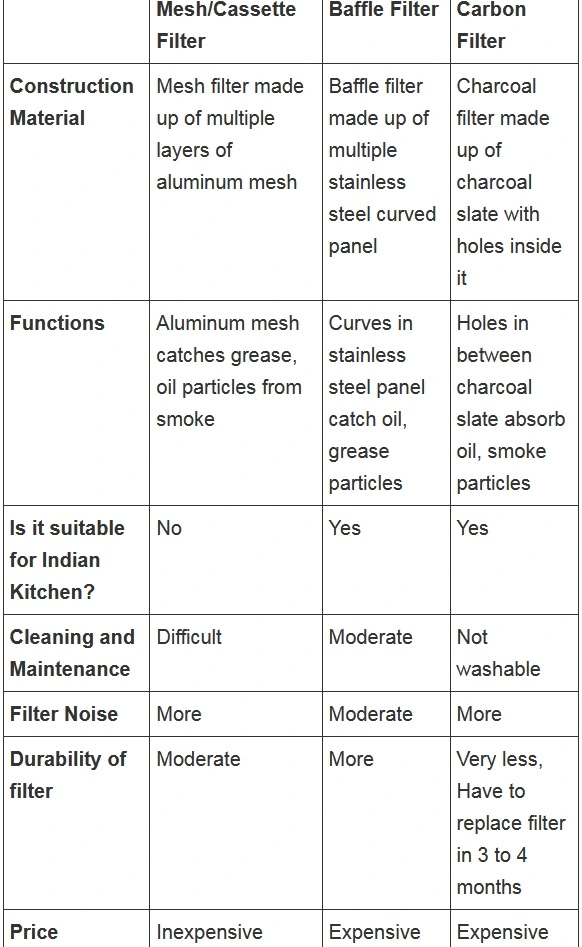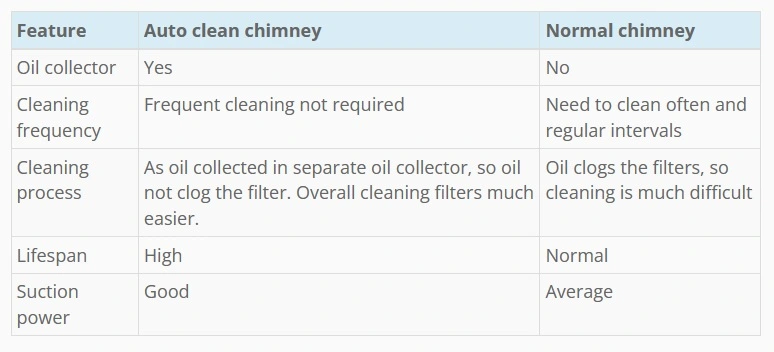A kitchen chimney is an appliance that absorbs fumes, smoke, and odors emitted during cooking. It keeps your kitchen cool, free of pesky odors and greasy walls and cupboards. This article covers all the details of the Kitchen Chimney.
☼ Chimney Types
Based on the construction, there are two types of chimneys: Hood and Straight-Line Chimneys.
► Hood/Duct Chimneys: This type has a covering or hood above the range. An internal fan catches steam, odor and fumes and pumps it into a chimney and then into a vent. Hood Chimneys can be wall-mounted or installed as a self-supporting unit over the cooking area if you have an island kitchen.
#Cost & Installation
- Installation is slightly complex as it involves drilling for ducts and pipes.
- Repositioning not possible.
#Suction
Very high compared to straight-line chimneys.
#Filters
- Baffle filters
- Suitable for Indian cooking.
- Easy to clean.
- It results in improved airflow.
- Noise due to filter is moderate.
- Requires monthly cleaning.
- Mesh filters
- Suitable for light cooking.
- Mesh has to be cleaned once a week.
- Performance
#Performance
30% more effective than straight-line chimneys as it extracts and throws air outside.
#Efficiency
Higher efficiency as it eliminates heat and humidity.
► Straight Line/ Ductless Chimneys: After the charcoal filter traps smell, smoke, and grease particles, Straight Line or Ductless Chimneys re-circulate air back into the kitchen with the help of a fan or blower and motor. These chimneys are well suited for kitchens that do not have the luxury of space for drilling pipes and ducts.
#Cost & Installation
- No pipes or ducts involved.
- Easy to install and reposition without any difficulty.
- Low installation cost.
#Suction
Low, as air is not expelled outside.
#Filters
- Charcoal Filters
- Suitable for Indian cooking.
- Cannot be washed.
- Needs to be replaced once in 2 months, depending on usage.
- Very noisy due to the filter.
#Performance
Less effective as air is re-circulated back to the kitchen.
#Efficiency
Efficiency is lesser as it doesn’t remove heat.
☼ Kitchen Chimney Mounting Style
In the market, you find a kitchen chimney with three mounting styles, wall-mounted, island and built-in chimney. You can choose any one of these three chimneys depending on the construction of your kitchen and the space available in it.
► Wall Mounted Chimney – This type of chimney is wall-mounted, if your stove is against the wall, then this chimney is a perfect choice for your kitchen.
► Island chimney – This type of chimney is an ideal product for kitchens with modern homes that have a stove in the center of the kitchen.
► Built-in chimney – This chimney is perfect for small kitchens, as the built-in chimney is compact in size. This chimney is fixed to the wall and integrated within the woodwork, due to which it does not occupy extra space.
☼ Cooking Area Specs
Another thing to keep in mind before buying a chimney is the specs of your cooking area. Here are some thumb rules to remember:
► The chimney hood should be larger or equal to the size of the stove.
► The distance between your cooktop and chimney should never be less than 65 cms. A perfect distance is anywhere between 65 – 75 cms.
► To find the required suction power for your kitchen, multiply the volume of the room by 10. For instance, if your kitchen volume is 40 cubic meters (LxBxH, the suction power required will be 400m3/hr).
☼ Suction Capacity
For example: If the kitchen has dimensions of 4 m x 4 m x 2.5 m , then the volume is 40 m³. Multiply that by 10 and you get 400 m³/hr, which is the minimum required suction power for that kitchen.
☼ Size Matters
The dimensions of the chimney should always be slightly larger than the size of your stove in order to effectively absorb the smoke. Most of the chimneys you find in the market come in two standard sizes- 60cm and 90cm.
- 60-cm kitchen chimney – for a 2-burner stove
- 90-cm kitchen chimney – for stoves with 3 or more burners
☼ Kitchen Chimney Filter
Depending on the material, structure and filtering process, chimney filter types are classified into 3 categories.
► Cassette/Mesh Filter
Usually, the filters have multiple layers of aluminium or stainless steel mesh filters to trap the solid particles while allowing the smoke to escape. However, these filters require high maintenance.
In addition, they can reduce the suction capacity of the filters because of the blockages. The best way is to wash the filters regularly either by yourself or getting it done by someone.
- Made up of multiple layers of aluminium mesh which have tiny holes to trap particles and purify air.
- Oil and other particles cling to the mesh as the air passes through it, boosting the purification process.
- Must be washed with detergent on a bi-weekly basis to keep filter functional or it may get clogged.
► Baffle Filter
Research says that these filters are about 30% better than the mesh filters. The design involves the panels on the filter to have multiple curves that allow the smoke to escape freely while restraining the grease from doing so.
It is comparatively easier to maintain a baffle filter because they require cleaning once in around 3 to 4 months. Nowadays, you have the detachable baffle filter whereby you can do so at home and clean it thoroughly. You do not need a technician to do so.
- Best suited for Indian kitchens due to increased use of oil and spices while cooking.
- Uses overlapping layers of steel/aluminium to change direction of airflow in order to separate grease and spice particles from the air.
- Suction power is not affected even if oil is collected in the first layer.
- Needs to be cleaned on a regular basis for optimal performance.
► Carbon Filter
Just as you have carbon filters in your water purifiers, you can have these filters in your chimneys as well. They remove the bad odour from the food. Made up of charcoal, you can use this carbon filter in both the duct as well as the ductless chimneys.
The oil and other greasy particles can stick to the carbon filters thereby necessitating their replacement after a period of around six months. These types of filters are very popular in India.
- Features a layer with charcoal granules which effectively eliminates odor.
- Mostly optional, this filter is used together with either baffle or cassette filters.
- Needs to be replaced every 3 to 6 months depending on intensity of cooking.
► Mesh Filter vs Baffle Filter vs Carbon Filter
☼ Cleaning Method
► Auto clean: Easy to clean and more durable as they are good oil collectors
► Normal clean: Difficult to clean and high maintenance since it is manually done
☼ Advanced Features
► Detachable Oil Collector: The oil particles get collected in this collector, which is easy to detach and clean, thereby improving the efficiency of the filter.
► Soft-touch Push Buttons: Provides an elegant look and is convenient to use.
► LED Light: Provides greater visibility while cooking.
► Auto-heat Sensor: It detects heat and oil particles and automatically switches on or off.
► Indicator/buzzer: They have indicator lights or buzzers that let you know when it is time to clean or replace the filters.
► Soundproof Kits: They ensure that there is minimal noise from the chimney while it functions.

